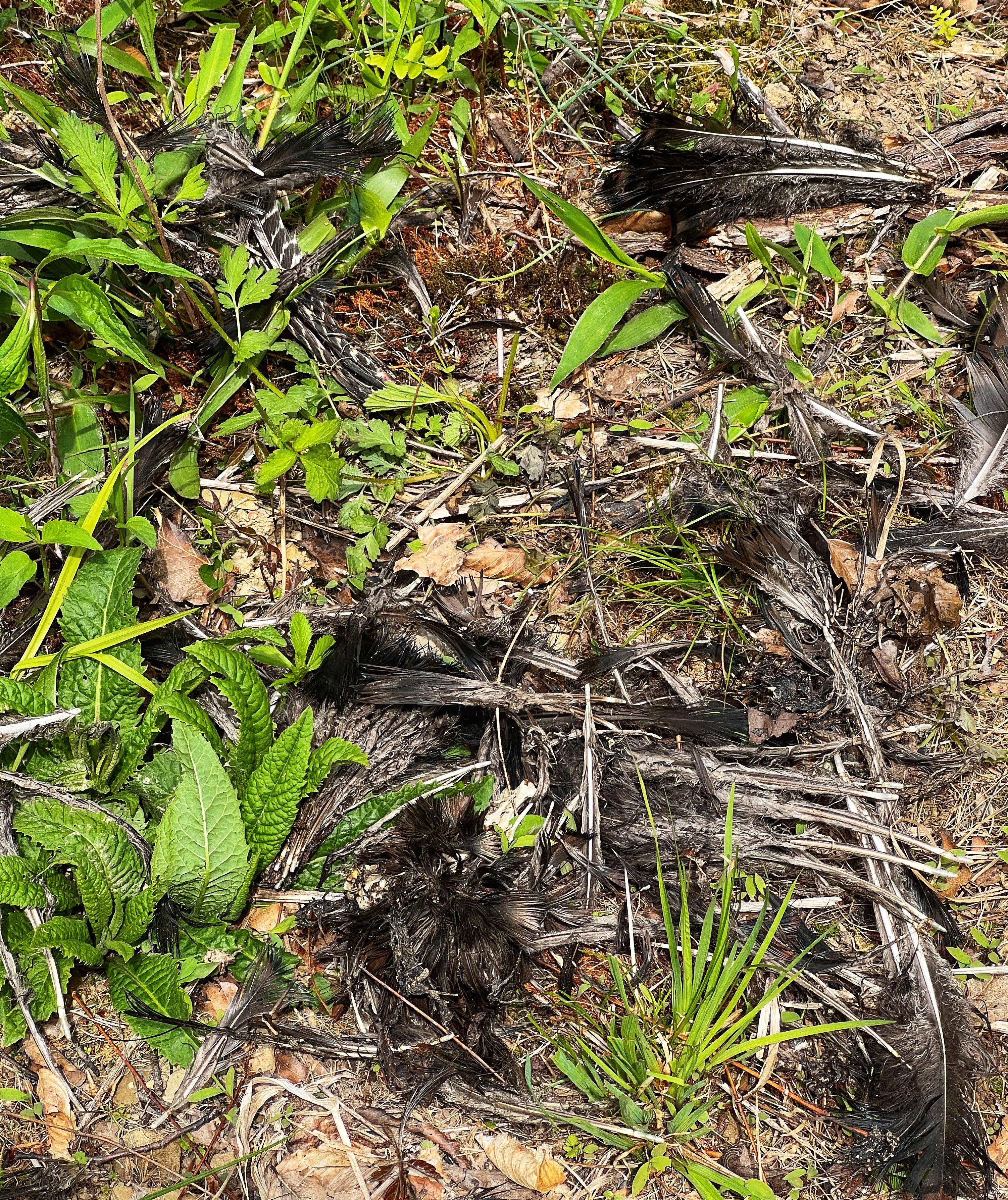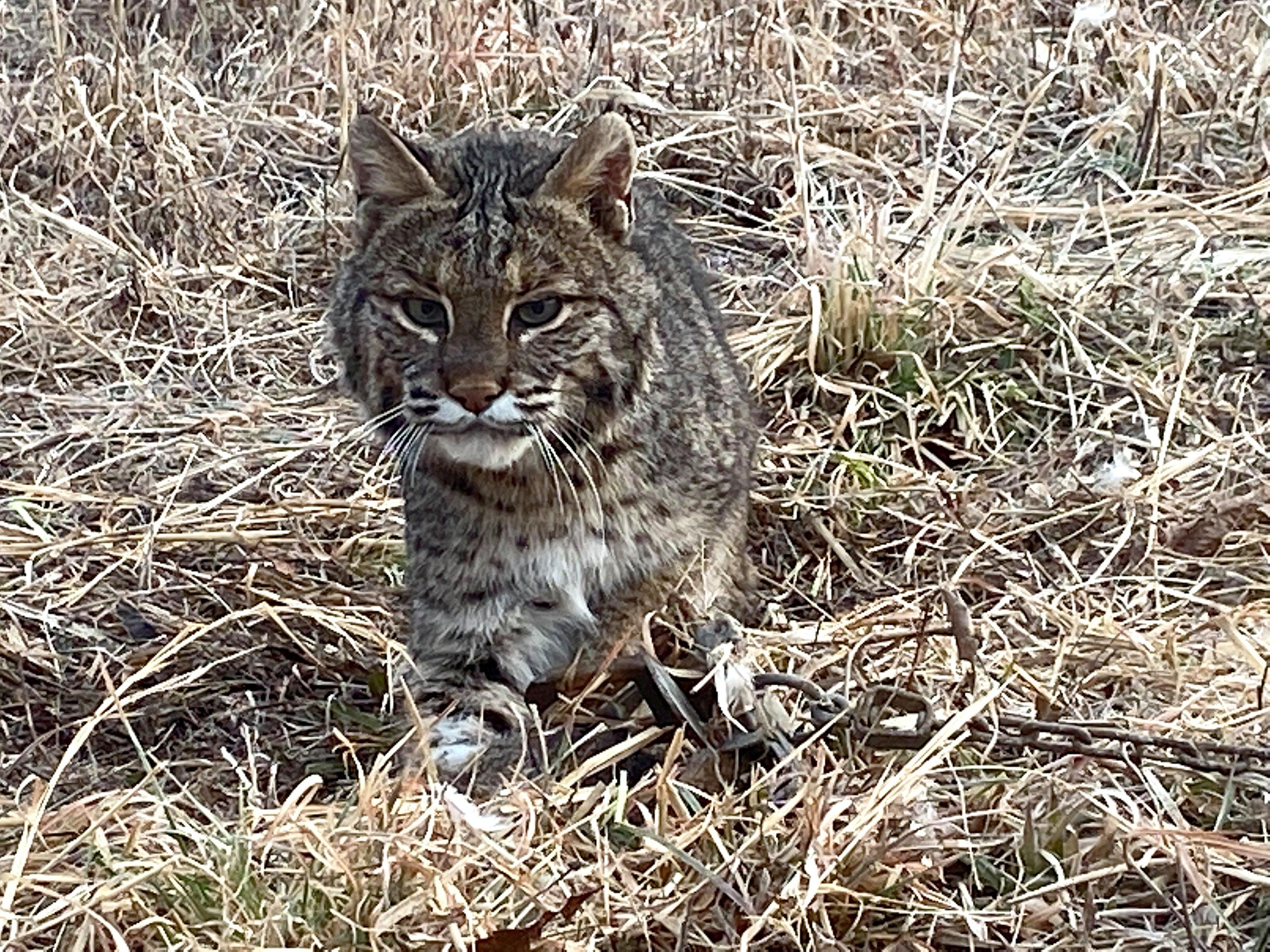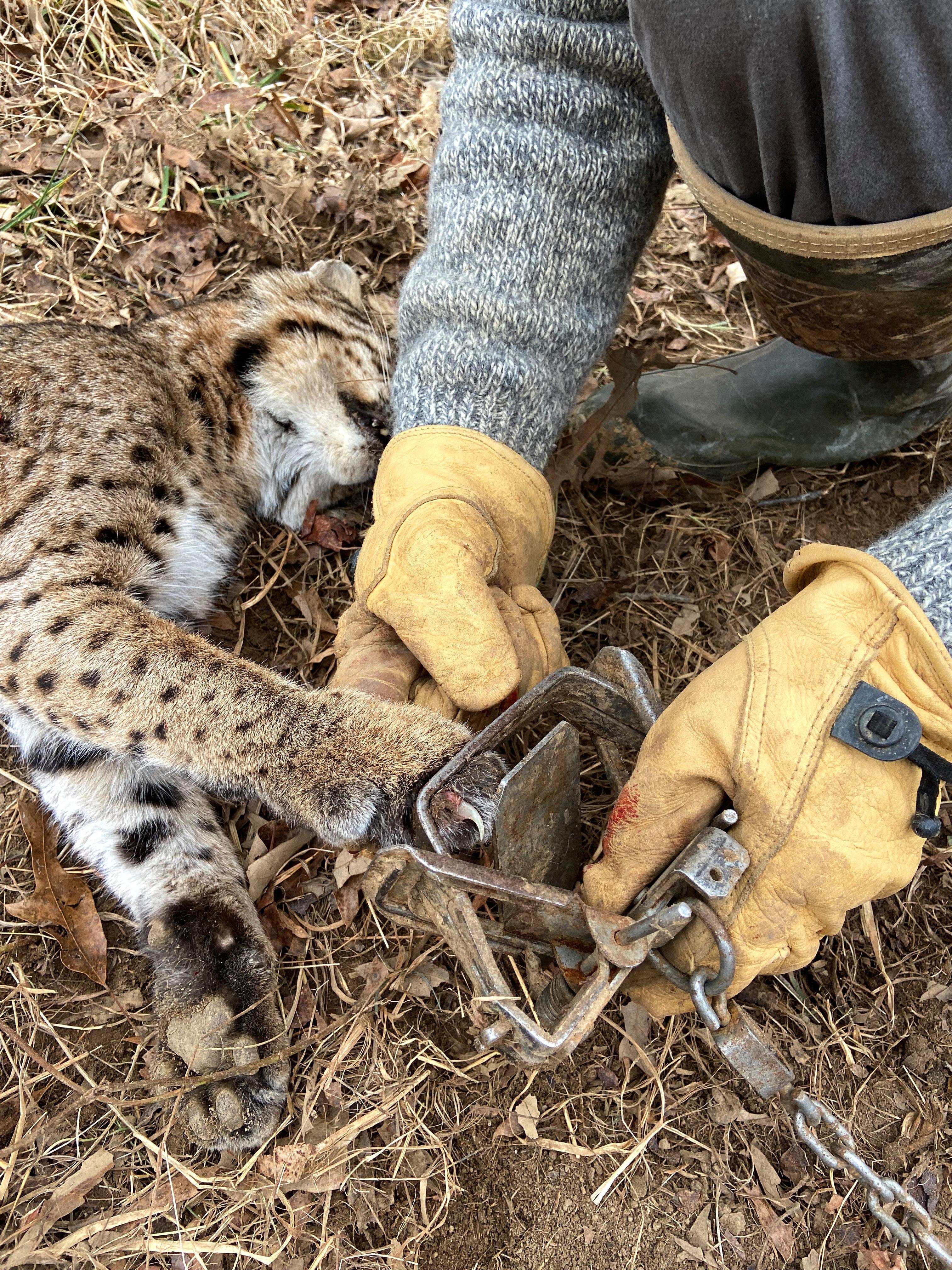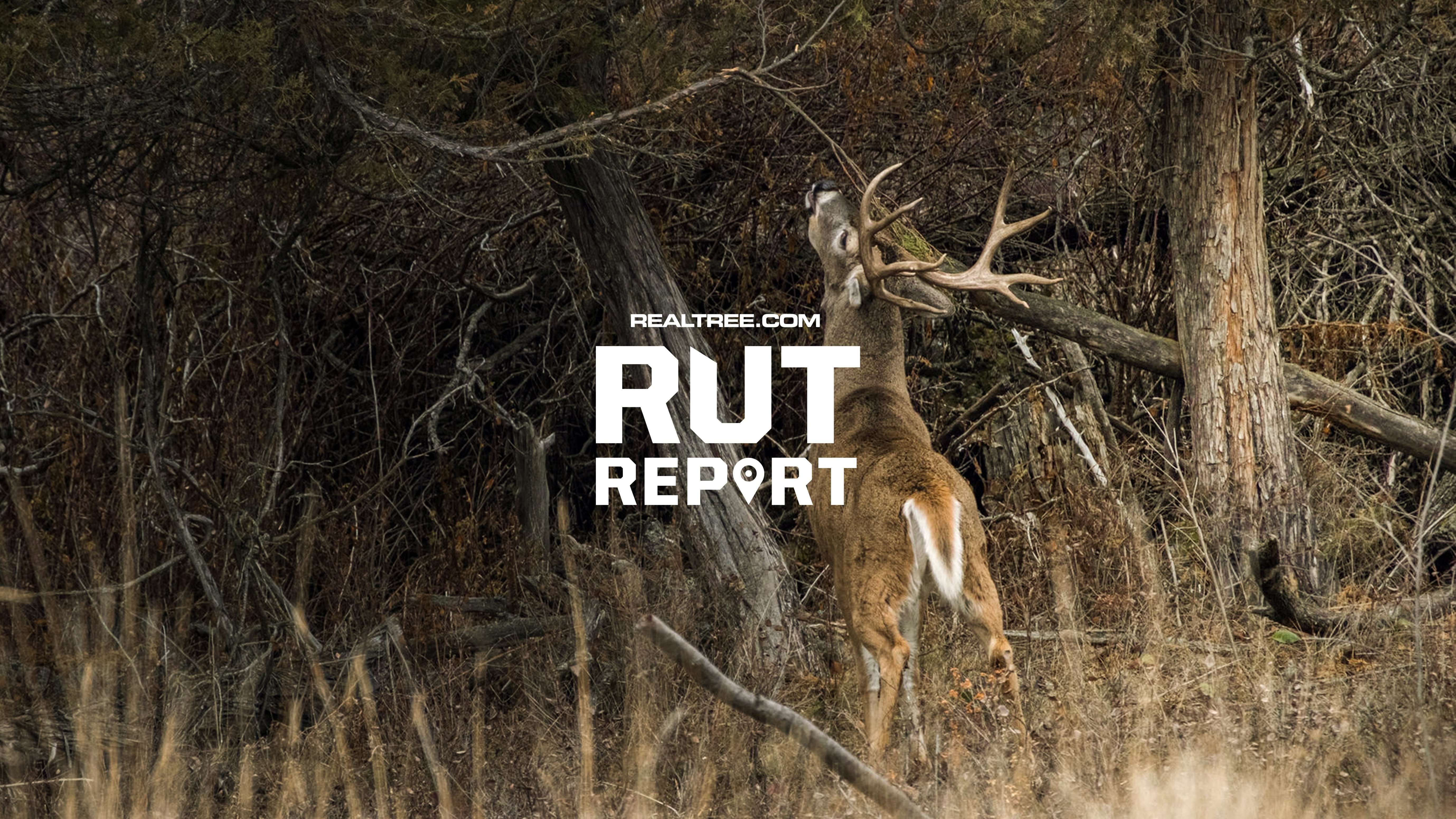Bobcat populations are on the rise across a large portion of the United States, and that might lead to lower turkey numbers in your area
It was snowing heavily that late-December afternoon. It was muzzleloader deer season, and I was home from college, trying to fill a tag with my .50-caliber Hawken. The year had to be early to mid ’90s, and I was on our family farm, the place where I’d cut my hunting teeth and spent just about every free minute of my life.
I’d taken shelter from the heavy snow under a large cedar. As I leaned back against the trunk beneath the thick canopy, I just made out the slightest movement in front of me. As the animal drew closer, I soon realized it was a bobcat — the first I, or anyone I knew, had seen on the property. The cat must have had the same idea I had, because it was headed straight toward me and the shelter of the cedar. At just 15 feet away, a slight movement on my part or an errant swirl to the breeze tipped the cat to my presence, and it spun around and disappeared into the falling snow.

Bobcat populations have soared during the past 20 years in areas with high turkey densities. Image by David Hoffmann
I told everyone I knew about that bobcat. None of my friends or family could recall ever seeing one in our area of western Kentucky. It was a novelty. An animal seemingly out of place.
Fast forward some 30 years or so. Bobcats are no longer a rarity on our farm. In fact, it is rare that we go hunting and don’t see one. Trail camera photos turn up bobcats of various ages on a regular basis. That trend of rapid population growth seems to be common across much of the United States now. According to a 2010 study published in the Journal of Fish and Wildlife Management, every state but Delaware had a measurable bobcat population. Estimated population across the country is now approaching 4 million. Thirty-eight states now offer a bobcat hunting or trapping season.
That rapid rise in population and range for bobcats coincides with the massive growth of wild turkeys across the same time period and range. When turkeys moved into a new area, bobcats soon followed. Could the two be connected?
“There is no doubt that bobcats kill and eat wild turkeys,” says noted turkey biologist Dr. Will Gulsby of Auburn University. “What we don’t know is how often. It’s difficult to determine cause of death on wild turkeys. Even with modern tracking systems, by the time we get the alert that the monitored turkey hasn’t moved in a set period of time and the mortality alert is issued from the transmitter, the carcass is often heavily scavenged. This makes figuring out what predator or other factor killed the turkey difficult.”

It is often difficult for researchers to determine cause of death on wild turkey kill sites. Image by Bill Konway
Because it is so difficult to determine the cause of turkey death, many studies often lump suspected bobcat and coyote kills into the same category. The two together make up the largest cause of death for mature wild turkeys, particularly in hens, which are more susceptible to predation during nesting and poult rearing times.
A 2018 study by Dr. Michael E. Byrne and Dr. Michael Chamberlain looked at hen mortality rates of Eastern wild turkeys in bottomland hardwood habitats. They found that the leading cause (87%) of hen mortality in the study group was attributed to bobcat or coyote predation. A similar study in 2016 done in longleaf pine habitat found that 52 percent of the monitored hens died during the study, with 35 percent of those mortalities attributed to bobcats, coyotes, and foxes. In episode 9 of The Wild Turkey Science Podcast, researcher Dr. Bret Collier of Louisiana State University theorized that bobcats might be the No. 1 predator of adult hen turkeys, in front of coyotes and great horned owls.
So how many turkeys are bobcats taking in a given area? It’s hard to say. Because bobcats are so secretive in their movements and have expanded into areas where they weren’t traditionally found, not much research exists that tracks their daily activities and diet.
But with increasing populations and hunting opportunities, biologists are gaining more information on the secretive felines. Stomach content and scat analysis on bobcats is being studied by multiple states. A recent study by the University of Mississippi found that 80% of the studied bobcat diets was made up of rodents such as mice and rats, but that might not tell the entire story.
“While most studies show a low level of game birds, including turkeys, that might not show the whole picture,” Gulsby said. “One thing you have to take into consideration is that wild turkeys, and game birds in general, are highly digestible. Unless a predator eats a foot with toenails or large primary feather, there won’t be much evidence left in the stomach or scat.”
Laura Palmer, furbearer biologist for the Kentucky Department of Fish and Wildlife, recognizes the problem of figuring out what a bobcat has eaten. “We are currently working with labs to hopefully analyze feathers pulled from bobcat stomachs to determine individual bird species in studied samples,” she said.

Some turkey researchers place bobcats at or near the top of wild turkey predators. Image by Outdoorsman
Perhaps the biggest indicator of increased bobcat/turkey interaction comes from hunters. Increasingly, hunters are reporting bobcats attacking decoys or stalking well-camouflaged hunters while they call to turkeys. Videos like this one show a bobcat actively stalking and attacking turkey decoys. Or, even more convincing, the tale of Kentucky turkey hunter Jack Canady who was attacked by a bobcat while calling turkeys. Jack ended up with a hospital visit after his encounter. In this video, Virginia turkey hunter Kevin Walter was also attacked while hunting. Stories like these make it easy to see that bobcats consider turkeys as a food source, and even the sound of a wild turkey is enough to bring them in.
Bobcat Predation Control?
Have you noticed more bobcats in your area and wondered what you can do to lessen their impact on turkey numbers? First and foremost, the most effective thing you can do to decrease predation percentages from all predatory species is to increase the nesting and brood-rearing habitat on the property you manage.
A leading theory on decreased nest success rates the past several years is that habitat range in general, and nesting and brood-rearing habitat in particular, has dropped significantly in the past 20 years. That means that nesting hens and predators are packed into a tighter area and, by default, come into contact with each other at a much higher rate than was historically the case.
Some of the best ways to increase and improve habitat on your property include regular controlled burns, CRP and native grass planting, and timber harvests.
The goal is to increase brushy and grassy areas over a large range so that hens can spread out when nesting. If your property is all open timber, pasture, crop field, or a blend of those , think about where your suitable nest habitat is. It’s likely going to be small strips along roadsides and field edges — the same areas that bobcats and coyotes use as travel corridors. By spreading the nesting cover over a larger landscape, it makes it much less likely that a roaming bobcat comes in contact with the nest.

Trapping and hunting bobcats can be much more effective than for coyotes because of the bobcat’s territorial nature. Image by Will Brantley
For hunters and habitat managers who decide to actively control bobcat numbers — through hunting or trapping in states that allow it — those activities can be much more effective on bobcats than on coyotes.
That’s mainly because the territorial nature of bobcat home ranges. Unlike coyotes, where individuals are constantly in search of new home ranges, and rush in to replace dominant coyotes that fall to hunting or trapping, bobcats cover a larger home range and are slower to move into a new area when one opens up because of the removal of a dominant cat.

Removing just a few bobcats from a property can reduce predation over several thousand acres. Image by Will Brantley
According to Dr. Gulsby, the typical bobcat home core home range covers 350 acres for females and about 700 acres for males. Although that’s their main core area, their actual home range can range up to 2,000 acres for females and 4,000 acres for males. This means that removing just a few cats can significantly lower predation rates over a large area.
Are bobcats here to stay? Absolutely. As long as there is suitable habitat and prey, their numbers will likely continue to expand across the country. But, by providing quality habitat and keeping numbers in check through hunting and trapping, land managers can lessen the impact they have on the wild turkey population.












